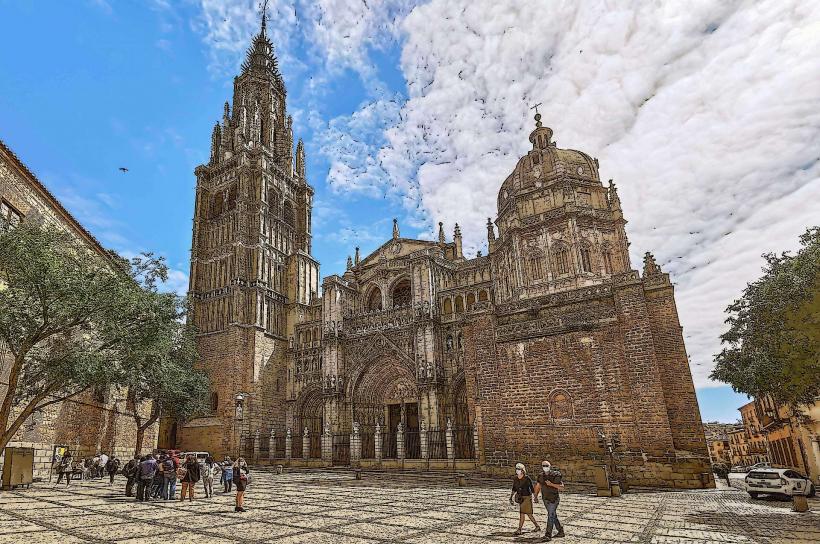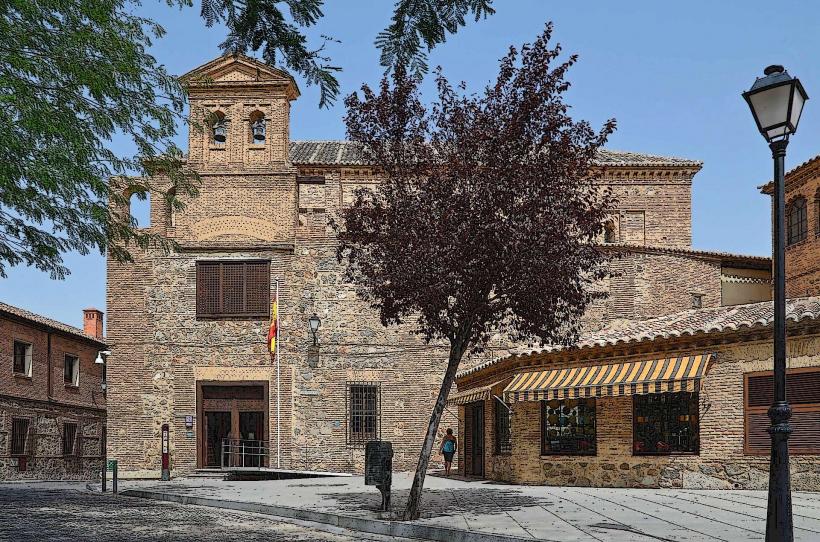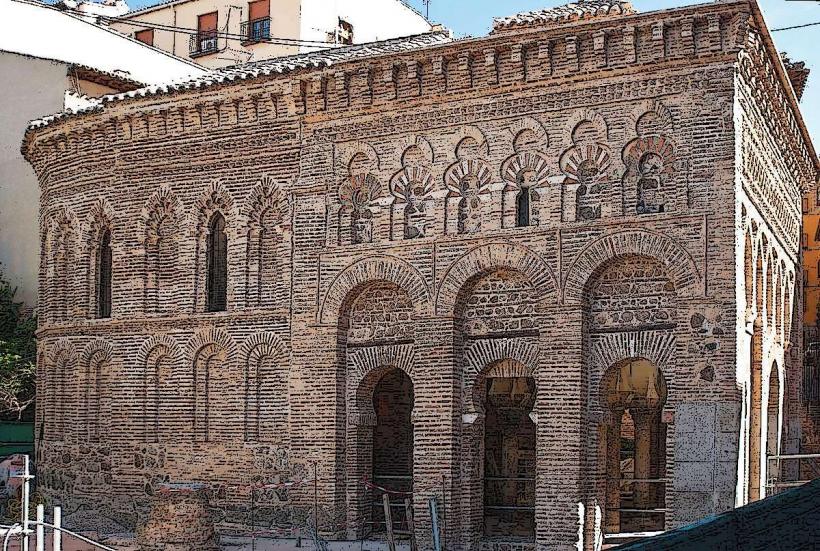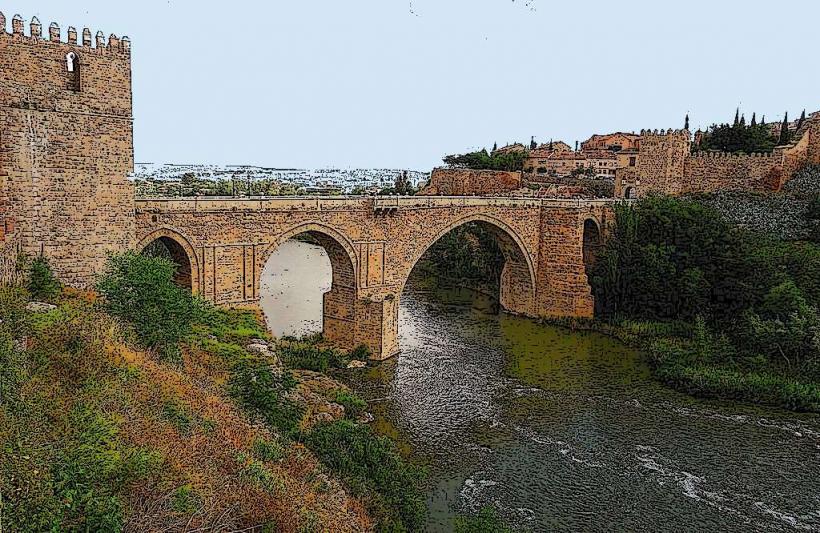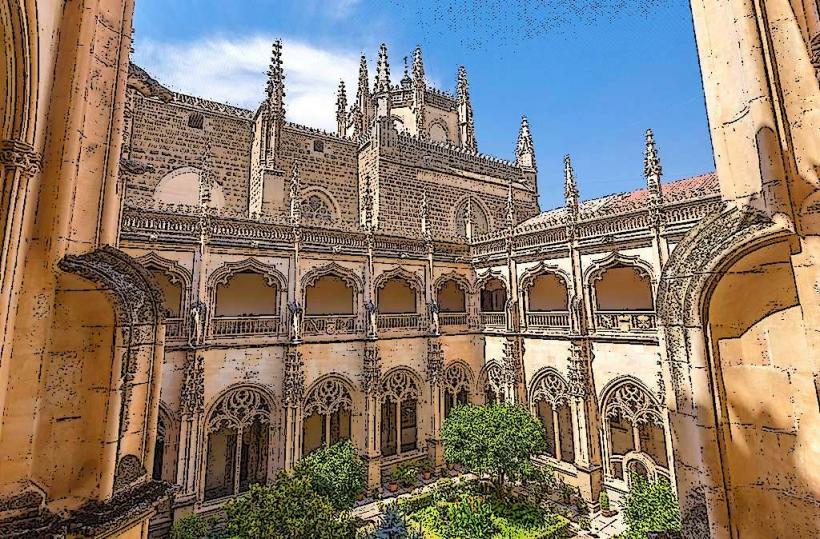Information
Landmark: El Greco MuseumCity: Toledo
Country: Spain
Continent: Europe
The El Greco Museum (Museo del Greco) in Toledo, Spain, is dedicated to the life and work of the renowned Greek-Spanish painter Doménikos Theotokópoulos, better known as El Greco. El Greco is one of the most influential and distinctive artists in the history of Western art, renowned for his expressive, dramatic, and unique style that combines elements of Byzantine, Renaissance, and Mannerist traditions.
Historical Background
El Greco moved to Toledo in 1577, where he spent the final years of his life, working and painting for both religious and private patrons. His time in Toledo was pivotal in the development of his signature style, which combined spiritual intensity, elongated figures, and a bold use of color. The museum was established in 1911 in recognition of El Greco’s profound influence on the city of Toledo and his contributions to Spanish art. The museum is located in a historical Renaissance-style house in the Jewish Quarter of Toledo, reflecting the environment in which El Greco lived and worked.
Architecture and Setting
The El Greco Museum is housed in a traditional Toledo house, which represents the kind of space where the artist would have worked. The building itself has been carefully restored to resemble a 16th-century house, featuring typical Mudejar architectural elements, such as wooden beams, arched doorways, and courtyards. Visitors can explore rooms that reflect the environment El Greco may have experienced, including areas where he may have painted and lived.
The museum's layout is designed to give visitors a sense of the artist’s life and work in Toledo, with galleries arranged to provide insight into his creative process and his connection to the city.
Collections and Artworks
The museum’s collection consists of a variety of paintings, drawings, and sculptures attributed to El Greco and his contemporaries, as well as objects related to the artist’s life and time in Toledo.
1. Key Paintings:
- The museum showcases several important works by El Greco, including "The Burial of the Count of Orgaz", his most famous painting, which is located in the Santo Tomé Church in Toledo but has been reproduced in the museum.
- Other notable works include "Saint Martin and the Beggar" and "The Opening of the Fifth Seal", which exemplify his signature use of elongated figures, vivid color contrasts, and spiritual intensity.
2. Thematic Exhibits:
- The museum also delves into the evolution of El Greco's style over time, from his early Byzantine influences to his later Mannerist period. The exhibits explore his religious themes, particularly focusing on his deep connection to Catholicism and the spiritual upheavals of 16th-century Spain.
3. Personal Artifacts:
- In addition to the artist's paintings, the museum displays various personal objects that belonged to El Greco, including letters and documents related to his commissions in Toledo. These materials offer a glimpse into his life as a working artist and his relationships with patrons, including members of the Catholic Church and the noble families of Toledo.
4. Workshops and Techniques:
- The museum also explores El Greco's techniques and his innovative use of color and composition. Several exhibits are dedicated to the artist's workshop, providing insight into how he might have trained his students and worked on his monumental pieces, often with large altarpieces and religious scenes.
Cultural and Historical Significance
The El Greco Museum not only celebrates the life and legacy of one of Spain's most famous artists but also emphasizes the role that Toledo played in shaping his work. Toledo, with its medieval streets, churches, and mosques, provided El Greco with both the inspiration and patrons for his religious artwork. The city’s historical complexity, as a crossroad of cultures between Christians, Jews, and Muslims, is reflected in El Greco's own vision of the world—one that sought to reconcile the divine and the earthly in his work.
1. El Greco’s Impact on Toledo:
- Toledo was not just the place where El Greco spent the latter part of his life, but also where he produced some of his most important pieces, such as the altar for Santo Tomé and the church of San Juan de los Reyes. His work was instrumental in the religious art of the Spanish Renaissance and Baroque periods.
- Today, the city of Toledo itself remains deeply connected to El Greco, with many of his works displayed in various churches, and the museum serves as an important cultural space for both the artist’s legacy and the city’s history.
Visitor Information
- Location: The museum is located in the Jewish Quarter of Toledo, near other historical landmarks like the Sinagoga del Tránsito and the El Greco House.
- Hours: The museum is generally open throughout the year, although hours may vary seasonally. It is advisable to check the museum’s website for up-to-date visiting hours.
- Entry Fee: There is an admission fee, with discounts available for students, seniors, and groups. Free entry may be offered on certain days, such as local holidays.
- Guided Tours: The museum offers guided tours in multiple languages, providing deeper insights into El Greco’s life, works, and influence. These tours can help visitors understand the unique style and historical context of his paintings.
Conclusion
The El Greco Museum in Toledo is an essential stop for anyone interested in the life and works of one of Spain’s most important artists. By housing both his paintings and personal artifacts, the museum offers a unique glimpse into the mind of El Greco and the city that inspired much of his best work. Whether you're a fan of Renaissance art, interested in the history of Toledo, or simply curious about the man behind some of Spain’s most spiritually profound masterpieces, the El Greco Museum offers a rich and fulfilling experience for all visitors.

